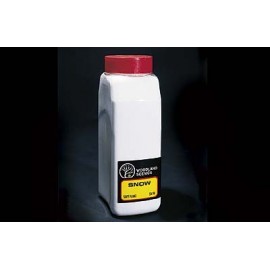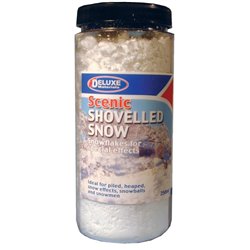Generally, plastic model plane kits do not come with plinths supplied. Nowadays, the majority of kits are designed to...
No products
Product successfully added to your shopping cart
There are 0 items in your cart. There is 1 item in your cart.
Search Tips
Christmas and New Year
We are dispatching orders every weekday apart from Christmas Day, Boxing Day and New Year's Day.
If you order is time critical, select next day delivery at checkout.
The shop in Sandown is closed from 25th December, reopening on 30th December.
How can I easily create realistic snow for my layout?
Realistic snow can be a fantastic backdrop for a layout or diorama and it can be achieved fairly easily and cheaply. Some manufacturers have created specific snow effects specifically designed to use on layouts such as 'Scenic Shovelled Snow' by Deluxe Materials and 'Soft Flake Snow' by Woodland Scenics. Both these products are easy to use and can be configured to model light coverings or heavily heaped snow drifts as required.
There are also tried and trusted methods available for those modellers who wish to create their own, bespoke effects. Water-based plaster can be a great base to work from. It is cheap, easy to shape as required and readily available from hardware stores or over the internet. Application of subsequent snow layers can be achieved by sprinkling a suitable medium on top. Dry plaster left over from creating the base can be useful here. Any dried residue can be ground down until it is in a suitably powdered consistency and then sprinkled onto the model. It can be secured in place with watered-down PVA glue.
Another alternative that offers a useful powdered effect is bicarbonate of soda or other similar baking powders. Likewise, this can be secured in place by selective use of PVA glue. Powdered mediums can be applied by a number of different means including by a small sieve for random coverings or by pipette where piled-up layers are required, such as on doorsteps or window sills. Why not try some of these techniques on your next project?
Click here to receive the tips weekly in your mailbox. You can unsubscribe at any time.









